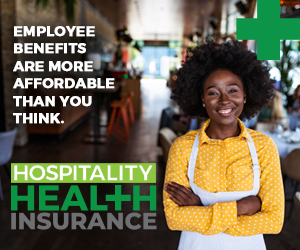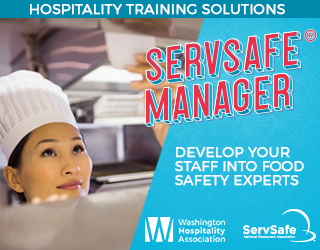Relief programs – info and updates
This is a brief list of programs created to help businesses and employees impacted by the coronavirus pandemic. This list is updated regularly to reflect the current status and ensure accuracy. The list includes a status update on federal and state relief programs and tax credits provided by the U.S. Small Business Administration (SBA), U.S. Internal Revenue Service (IRS) and the Washington State Department of Commerce.
Contact your tax advisor for more information possible financial relief options for your business. Members of the Washington Hospitality Association also receive a 30-minute consultation each year with experts from our Advisory Network. Simply call 800.225.7166 and we’ll connect you to one of our Advisory Network tax consultants.
Small Business Economic Disaster Assistance
The Small Business Administration (SBA) provides low-interest disaster loans to help businesses and homeowners recover from declared disasters. If you have suffered substantial economic injury and are located in a declared disaster area ,you may be eligible for an SBA Economic Injury Disaster Loan (EIDL).
Learn more about the EIDL program and apply for a loan on the SBA website here.
Small Business Psychical Disaster Assistance
If you are in a declared disaster area and have experienced damage to your business, you may be eligible for financial assistance from the SBA. Businesses of any size and most private nonprofit organizations may apply to the SBA for a loan to recover after a disaster.
Learn more about the physical disaster loans and apply on the SBA website here.
AHLA and SBA secure PPP for hotel industry
June 26, 2023 update:
American hotels will benefit from an important update to the Paycheck Protection Program (PPP). Following months of collaboration with the American Hotel & Lodging Association and hotel owners nationwide, the Small Business Administration (SBA) issued new PPP eligibility guidelines.
Economic Injury and Disaster Loan (EIDL)
Aug. 1, 2022 update: End of 30 month deferral period approaching for many borrowers
COVID EIDL loan payments were automatically deferred for 30 months from the date of the note. The SBA began approving applications in Spring 2020, which means the end of the deferment period for early loans is approaching. The SBA has resources and guidance for borrowers who may be coming up on their first payment. Read more below.
PPP loan forgiveness
Hospitality businesses that received a second draw Paycheck Protection Program (PPP) loan in 2021 still have time to apply for loan forgiveness. PPP repayment for unforgiven loan portions begins 10 months after the end of the PPP covered period. The U.S. Small Business Administration (SBA) reports that $45.5 billion in 2021 PPP funds have gone unforgiven even though most of these loans are eligible for forgiveness.
Simplified forgiveness options through the SBA Direct Forgiveness Portal (Form 3508S) are a great option for PPP borrowers of $150,000 and less.
On May 28, 2021, the U.S. Small Business Administration (SBA) announced that the Paycheck Protection Program’s (PPP) funding is exhausted and they would no longer approve any applications. Many borrowers who received a PPP loan can still apply for forgiveness, but time is running out. This guide referencing the most recent SBA guidance can help you navigate the process and answer your questions.
When can I apply for forgiveness?
Borrowers who applied for and received a PPP loan have 10 months from the end of their covered loan period to apply for loan forgiveness. After that, they must start making payments to their lender.
Who is eligible?
First Draw PPP loans have the same eligibility requirements as Second Draw PPP loans and require three conditions to be met for full loan forgiveness. The SBA checks to see if you have met these conditions after the eight- to 24-week covered period following loan disbursement:
You must maintain employee and compensation levels.
You must spend the loan proceeds on eligible expenses like payroll costs.
You must spend at least 60% of the proceeds on payroll costs.
How?
A borrower can apply for forgiveness once all loan proceeds for which the borrower is requesting forgiveness have been used. Borrowers can apply for forgiveness any time up to the maturity date of the loan. Take the following steps to apply:
- Contact your PPP lender and complete the correct form
- Compile documentation showing that you have met eligibility requirements. This includes payroll documentation like bank statements, payment receipts, and tax forms, or non-payroll documentation like business mortgage statements. You must have documentation for claimed expenses that were incurred during the loan’s covered period.
- Turn the documentation and forms in to your lender and complete any other steps your lender requires. The SBA will contact them with decisions, so you should continue to communicate with your lender throughout the application process.
For more details or additional FAQs, you can visit the SBA website.
EIDL update
Since 2020, the COVID EIDL program has provided more than $351 billion to 3.9 million borrowers. In September 2021, restaurants worked with the SBA to increase eligible EIDL amounts and allowable expenses, including debt financing.
The EIDL closed on Dec. 31, 2021. If you have already applied for the loan and are awaiting funds, there are useful resources available:
For more information on how you can benefit from the EIDL program, check out this webinar led by the National Restaurant Association earlier this summer and a group letter urging SBA Administrator Guzman to adopt changes to the EIDL program.
Resources:
Read more about the payment schedule and loan deferment here.
Learn the details of the loan on the SBA website here.
Ongoing relief programs
Employee Retention Tax Credit (ERTC)
The Employee Retention Tax Credit is one of the best relief programs still available to businesses, but it can be complicated and time consuming. With this in mind, the Washington Hospitality Association partnered with Adesso Capital to provide members with the help they need to qualify for up to $26,000 per W-2 employee – without the headache. You can talk to one of Adesso’s tax experts by calling 888-856-0630 or you can get the conversation started online here.
Current status
Employers can still apply for relief and eligibility is determined by quarters in 2020 and 2021.
The Employee Retention Tax Credit (ERTC) was originally included in the CARES Act to provide a tax credit for employers who pay qualified wages to employees during the pandemic. It was extended so eligible employers can apply for the credit for qualified wages paid through Sept. 30, 2021.
(Note: The original extension allowed employers to apply for credit on qualified wages through Dec. 31, 2021. However, the Infrastructure Investment and Jobs Act changed the qualifying wages date to Sept. 30, 2021. Businesses that claimed an anticipated credit for Q4 of 2021 will need to pay back those Q4 payroll taxes.)
Filing Deadlines
The deadlines to claim ERTC are as follows:
- For all quarters in 2020 – file claim by April 15, 2024
- For all quarters in 2021 – file claim by April 15, 2025
Who is eligible?
An employer may be eligible for an ERTC if the business was fully or partially suspended by a COVID-19 related government order, or:
- If in 2020 gross receipts fell by 50% or more versus the comparable quarter in 2019. If an employer’s gross receipts rose above 80% versus a comparable quarter in 2019, it did not qualify for an ERTC for that quarter.
- If in 2021 gross receipts for the current or preceding quarter are below 80% of the comparable quarter in 2019. When an employer’s gross receipts go above 80% of the comparable quarter, it will not qualify for an ERTC in the next quarter.
Eligible employers may include those that also took out forgivable PPP loans, but borrowers cannot claim an ERTC for the same payroll costs used to qualify for PPP loan forgiveness.
How do you calculate your credit?
For 2021, eligible employers may claim a refundable tax credit against what they pay in Social Security tax on the qualified wages paid in an eligible quarter between Jan. 1 and Sept. 30, 2021. The credit is capped at 70% of $10,000 in qualified wages paid per employee per quarter (or $7,000) for each qualifying quarters.
Helpful resources
- IRS issues guidance regarding the retroactive termination of the Employee Retention Credit
- The National Restaurant Association published this page with examples of how the ERTC can be used.
- You will need to prove that your business was affected by a government order to qualify. This timeline shows Washington state shutdown orders until July 2021.
The IRS offers the following guidance that has been updated to reflect the changes made by multiple federal relief acts.
Employee Retention Credit – 2020 vs 2021 Comparison Chart | Internal Revenue Service (irs.gov)
- After March 12, 2020 and before Jan. 1, 2021 – Notice 2021-20, Notice 2021-49 and Revenue Procedure 2021-33
- After Dec. 31, 2020 and before July 1, 2021 – Notice 2021-23, Notice 2021-49 and Revenue Procedure 2021-33
- After Sept3 30, 2021 and before Jan. 1, 2022 – Notice 2021-49 and Revenue Procedure 2021-33
Work Opportunity Tax Credits (WOTC)
Current status
The Work Opportunity Tax Credit (WOTC) gives employers a tax break for hiring certain hard-to-place job seekers. The WOTC is not a new incentive (the federal program was created in 1996), but the current job climate makes the program especially relevant.
The Consolidated Appropriations Act, 2021 (Section 113 of Division EE P.L. 116-260) authorized the extension of the WOTC until December 31, 2025.
Generally, the following groups are eligible for the tax credit:
- Public assistance recipients that meet SNAP (food stamps), Temporary Assistance for Needy Families, (TANF) or long-term TANF requirements
- Military veterans
- Formerly incarcerated individuals hired within a year after their date of conviction, work release or release from prison or jail
- People with disabilities participating in state or federal vocational-rehabilitation programs who had an “individual written plan” for employment in the last two years
- Anyone who received Supplemental Security Income (SSI) for any month in the last 60 days
- Long-term unemployed individuals hired on or after Jan. 1, 2016 (must have been unemployed at least 27 consecutive weeks
How to apply
Employers or their representatives must submit applications within 28 days of the job start date. You can apply for the credits online and will need your SecureAccess Washington (SAW) account. You will also need a WOTC account, which can be created by navigating from eServices to the WOTC sign-in page and selecting “new employer” or “new representative.”
The ESD has additional information on how to apply here.
Resources
This article talks more about eligibility and incentive amounts and has information about the Federal Bonding Program that provides fidelity bond coverage for the employment of formerly incarcerated individuals.
Additional details can be found on the U.S. Department of Labor and the Washington State Employment Security Department websites.
Paid Family and Medical Leave
Current status
The federal Emergency Paid Sick Leave Act that provided relief to employers expired on Dec. 31, 2020, but Washington state has grants available for small businesses.
Small business assistance grants provide small employers (150 or fewer employees) with grant money to help cover costs associated with an employee taking Paid Family and Medical Leave.
There are grants of up to $3,000 for employers who added an employee to their payroll temporarily to replace an existing employee on leave, and grants (of up to $1,000) that help cover other wage related costs or equipment purchases.
Employers are allowed to apply for one grant per employee on leave up to 10 grants each year.
How to apply
Log-in to your Paid Leave employer account and click “More” on the top ribbon. Then navigate to the business assistance grant information and application page.
Resources
The ESD website explains the grants and goes over the eligibility requirements here. This page also has a toolkit for employers that talks about 2022 requirements, the required poster for employers and the 2022 paycheck insert you may have noticed. This page will also break down premiums for most employers.
This federal page has the most recent information about paid leave as it relates to the pandemic.
Programs no longer accepting applicants
April 6, 2023 – The Washington Hospitality Grant application window is now closed.
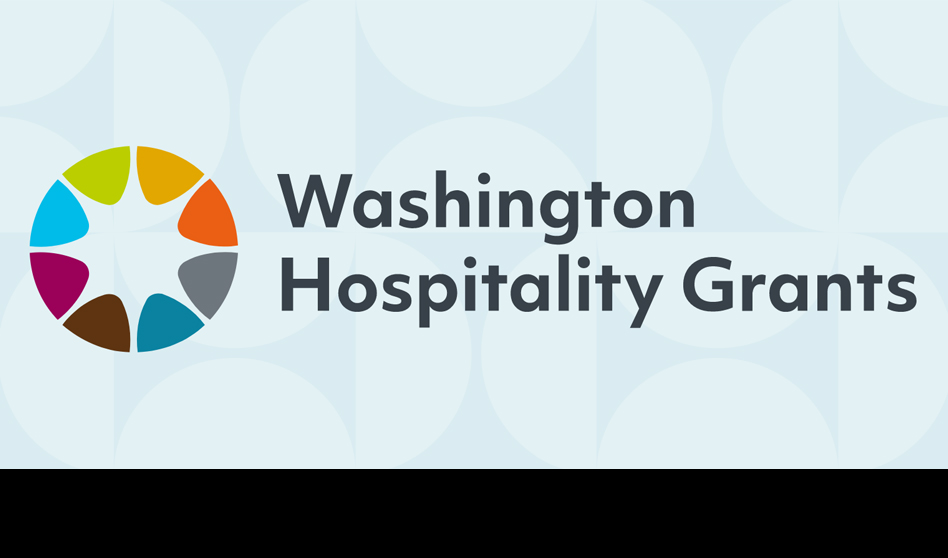
The Washington Hospitality Association State Government Affairs team secured a HUGE WIN for the hospitality industry during the 2022 legislative session. We advocated for relief for the thousands of hospitality operators in Washington who did not receive major relief like the Restaurant Revitalization Fund (RRF). Lawmakers agreed and approved $100 million in pandemic relief grant funding for the hospitality industry.
Roughly one year later the wait is almost over! The Washington State Department of Commerce opened the $100 million hospitality grant application portal Tuesday, March 14.
Click here for more information about the hospitality grants including eligibility, documentation requirements and more.
[IMPORTANT] UEI Number required
Applicants must have a Unique Entity Identifier (UEI) number to receive funds. This number replaces the Data Universal Number System (DUNS) number that was previously required to receive grant funds from federal programs.
Potential Hospitality Grant applicants without a UEI number should apply for one right away.
You can apply at sam.gov and read through their informational sheet here. The video below also provides application instructions.
When applying for your UEI number, you may receive one right away or it may take several weeks if the information you provide doesn’t completely match up with the information in the federal government database. There’s no way to know ahead of time how long it will take to get your UEI number, so you should apply sooner rather than later in case additional support is needed.
The Washington State Department of Commerce also has a UEI FAQ page.
Economic Injury and Disaster Loan (EIDL)
Aug. 1, 2022 update: End of 30 month deferral period approaching for many borrowers
COVID EIDL loan payments were automatically deferred for 30 months from the date of the note. The SBA began approving applications in Spring 2020, which means the end of the deferment period for early loans is approaching. Interest began accruing on the loans at the time of disbursement. The SBA says they will not be mailing monthly SBA Form 1201 payment notices, but may send regular payment reminders via email.
Account balances, interest amounts and payment due dates are accessible in the SBA Capital Access Financial System (CAFS). For the most up-to-date information regarding your SBA COVID EIDL loan, the SBA recommends creating and/or logging in to your CAFS account using the links below.
• Capital Access Financial System (CAFS) website
• Instructions on how to set up a CAFS account
• For additional technical assistance: contact the CAFS Helpdesk at 833-872-0502 or
For more information about making your first payment as a borrower, you can read the July 29 SBA update or contact your territory manager for assistance.
The Business Journals – Exclusive: SBA’s EIDL program exhausts its remaining funds
The Small Business Administration’s $345 billion Economic Injury Disaster Loan Covid-19 relief program has exhausted its remaining funds.
Current status: The popular loan program officially closed to new applications at the end of 2021, but small-business owners who had already received funds were able to request additional amounts. Small-business owners who were already working their way through the reconsideration process could also get approved as long as funds were available.
Shuttered Venue Operators Grant (SVOG)
The Shuttered Venue Operators (SVOG) includes over $16 billion in grants to eligible businesses such as live venue operators or promoters, theater operators and some museums and zoos. The SBA stopped taking new applicants on August 20, 2021.
What now? If you are an active applicant or awardee, you can still access the portal that you used to apply. Log in to your account here.
Paycheck Protection Program (PPP)
Current status: The SBA stopped taking applications for the Paycheck Protection Program (PPP) in May of 2021, but applicants have 10 months after the end of their covered loan period to apply for forgiveness.
How to apply for forgiveness
- This article covers the basics of loan forgiveness including the SBA portal for easy application.
- This summarizes our video series that takes a deep dive into PPP forgiveness.
- This is the current SBA guidance on PPP forgiveness.
Restaurant Revitalization Fund (RRF)
Current status
The Restaurant Revitalization Fund (RRF) remains closed despite multiple efforts by state and national associations to get Congress to replenish the fund. If you have additional questions, you can call SBA call-center support: (open 8 a.m. – 8 p.m. EST Mon-Fri): 1-844-279-8898
Members should contact their territory manager for assistance or email: communications [at] wahospitality.org.
Other closed Washington state relief programs
- Department of Agriculture Relief & Recovery Grants
- Working Washington Small Business Grants: Round 4
- Immigrant Relief Fund





![[Toolkit] Financial relief](https://wahospitality.org/wp-content/uploads/2020/08/time_money_balance-1000x640.jpg)


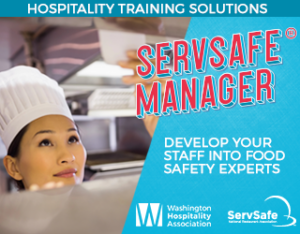



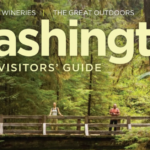



![Webinar replay! [Ask a Lawyer] Best hiring practices](https://wahospitality.org/wp-content/uploads/2024/05/CatherineHiring-webinar-150x150.png)

